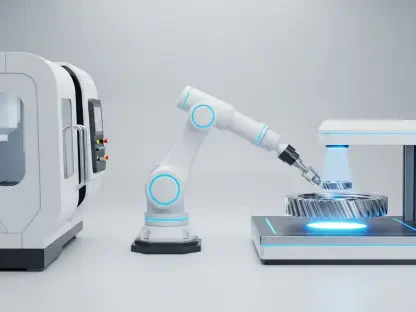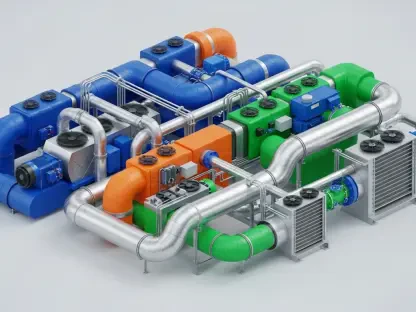In the rapidly evolving landscape of industrial chemistry, the cobaltocene market—focused on the organometallic compound Bis(cyclopentadienyl) Cobalt—stands out as a sector poised for extraordinary growth. Renowned for its exceptional catalytic properties, cobaltocene is becoming a linchpin in industries ranging from chemical synthesis to pharmaceuticals and advanced material science. As technological innovations continue to drive the demand for high-performance catalysts and specialty chemicals, this market is drawing significant global attention. Valued at $1.59 billion in 2023, projections indicate a robust climb to $2.5 billion by 2032, fueled by a consistent compound annual growth rate (CAGR) of 5.16% over the forecast period. This upward trajectory reflects not only the compound’s versatility but also the expanding industrial applications that rely on its unique capabilities, setting the stage for a deeper exploration of its market dynamics, regional influences, and future potential.
Industry Drivers and Diverse Applications
The momentum behind the cobaltocene market largely stems from the escalating need for efficient catalysts within the polymer industry, where this compound plays a transformative role. Specifically, cobaltocene enhances olefin polymerization—a critical process for manufacturing specialty polymers integral to sectors like automotive, packaging, and construction. As global polymer production surges to meet the demands of modern infrastructure and consumer goods, the reliance on cobaltocene has intensified. Its ability to improve both the quality and efficiency of these materials positions it as an essential component in driving industrial advancements. This trend is further amplified by the push for innovative, high-performance materials that can withstand rigorous applications, ensuring that cobaltocene remains at the forefront of polymer technology.
Another pivotal factor propelling the market is the pharmaceutical industry’s growing dependence on cobaltocene for precision chemical synthesis. Valued for its selectivity and efficiency, the compound is instrumental in producing drug intermediates and fine chemicals, meeting the stringent requirements of drug development. With substantial investments pouring into pharmaceutical research across regions like North America, Europe, and Asia Pacific, the demand for such specialized catalysts continues to rise. This application not only highlights cobaltocene’s versatility but also underscores its critical role in supporting advancements in healthcare. As the industry evolves with an emphasis on novel therapies and faster production cycles, cobaltocene’s contributions to creating high-quality chemical compounds are becoming increasingly indispensable, cementing its relevance in this high-stakes sector.
Regional Influences and Growth Patterns
Geographically, the Asia Pacific region dominates the cobaltocene market, a position fueled by rapid industrialization and the presence of expansive chemical manufacturing hubs in nations such as China, India, and South Korea. The region’s leadership is further bolstered by a thriving electronics sector, which increasingly incorporates cobalt-based compounds into cutting-edge technologies. This confluence of factors creates a robust demand that shows no signs of abating, as industrial output and technological adoption continue to accelerate. Additionally, supportive government policies and investments in infrastructure development enhance the region’s capacity to produce and utilize cobaltocene, making it a powerhouse in the global market landscape and a key area to watch for future growth trends.
In contrast, North America and Europe represent mature markets where steady growth is driven by a strong foundation in research and development, alongside regulatory frameworks that promote chemical innovation. These regions excel in integrating advanced materials and catalysts into pharmaceuticals and specialty chemicals, leveraging cobaltocene’s properties to maintain competitive edges in high-tech industries. Meanwhile, emerging markets in Latin America and the Middle East are beginning to carve out significant roles, propelled by increasing investments in chemical manufacturing and infrastructure projects. Although smaller in scale compared to their counterparts, these areas present untapped potential, with rising industrial activities signaling a promising expansion of cobaltocene applications in the coming years.
Technological Progress and Market Competition
Innovation stands as a cornerstone for the future of the cobaltocene market, with ongoing research dedicated to enhancing the compound’s catalytic performance through methods like ligand modification and the development of hybrid systems. These efforts aim to increase selectivity while simultaneously reducing production costs, thereby broadening the compound’s appeal across various industrial applications. Furthermore, the industry is witnessing a notable shift toward green chemistry, with sustainable production practices gaining traction to align with stringent global environmental regulations. This focus on eco-friendly methods not only addresses regulatory demands but also reflects a broader commitment to balancing high performance with environmental responsibility, shaping a more sustainable trajectory for cobaltocene’s market evolution.
The competitive landscape of this market is equally dynamic, characterized by a moderately consolidated structure where major players hold significant sway through strategic maneuvers. Companies such as Onward M Technologies, Hubei Xingfa Chemicals Group, and Albemarle are leading the charge, investing heavily in research and development to refine product quality and boost catalyst efficiency. Their strategies often include forging partnerships and expanding production capacities to meet growing demand while addressing environmental challenges. This competitive drive fosters a culture of innovation, pushing the boundaries of what cobaltocene can achieve in industrial settings. As these key players navigate market complexities, their efforts to adapt and innovate ensure that the sector remains vibrant and responsive to evolving global needs.
Future Pathways and Strategic Opportunities
Looking ahead, the cobaltocene market appears well-positioned for sustained growth, with opportunities emerging from the diversification of applications across multiple industries. The pharmaceutical sector, in particular, offers substantial potential as the need for specialized chemical synthesis grows, while novel uses in electronic materials present exciting new frontiers for exploration. Additionally, penetrating emerging markets in regions like Latin America and the Middle East could unlock significant value, as industrial capabilities in these areas expand. Collaborative efforts between research institutions and manufacturers are expected to accelerate the pace of innovation, paving the way for broader commercial adoption of cobaltocene in cutting-edge applications over the forecast period through 2032.
Reflecting on the strides made, it’s evident that strategic foresight played a crucial role in shaping the market’s past achievements. Sustainable production technologies and circular economy practices were prioritized, aligning industrial growth with global environmental goals. These initiatives, combined with a focus on addressing challenges like cobalt price volatility and regulatory hurdles, helped stabilize the market’s foundation. As stakeholders adapted to supply chain constraints and safety concerns surrounding organometallic compounds, their proactive measures ensured resilience. Moving forward, embracing continued innovation and fostering international collaborations will be vital next steps to sustain this momentum, ensuring that cobaltocene remains a pivotal material in the global chemical industry for years to come.









